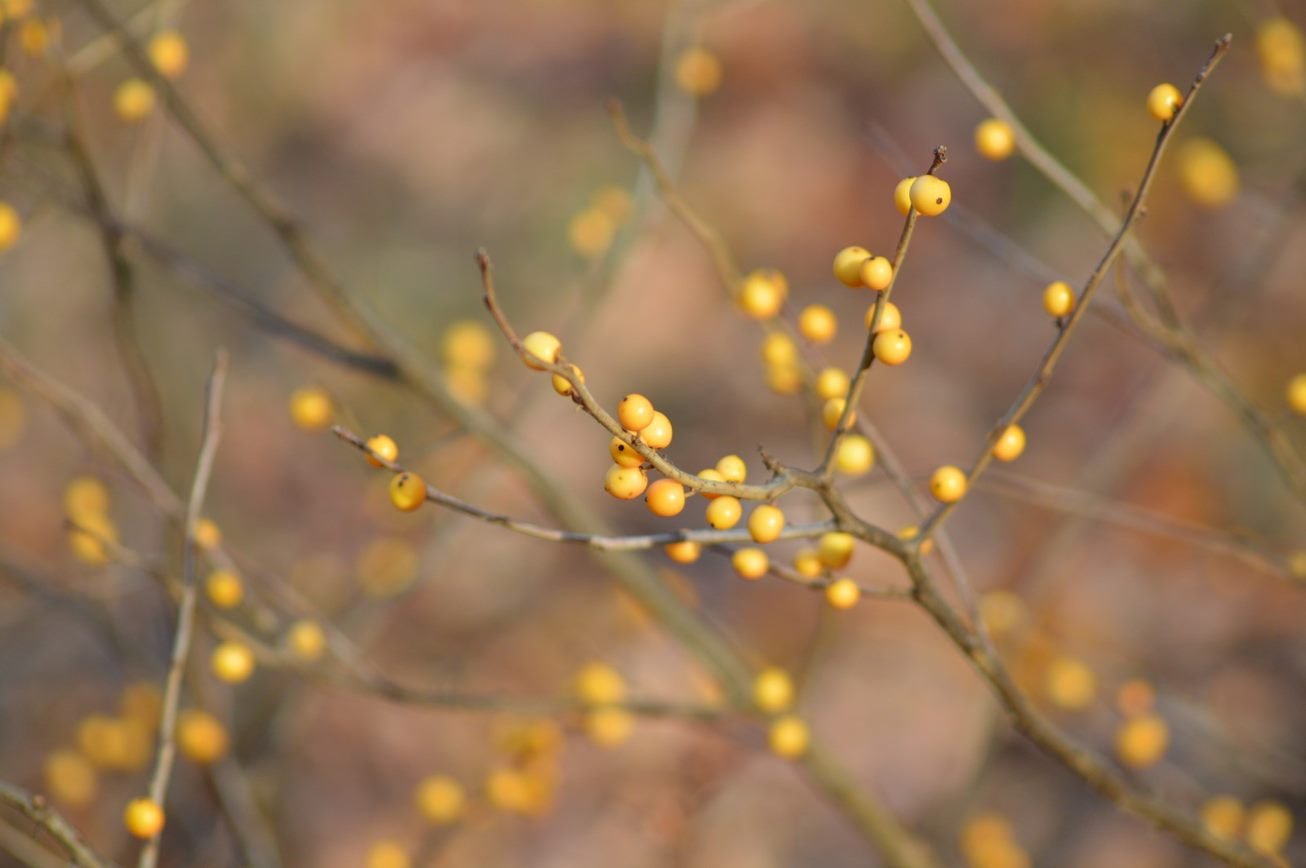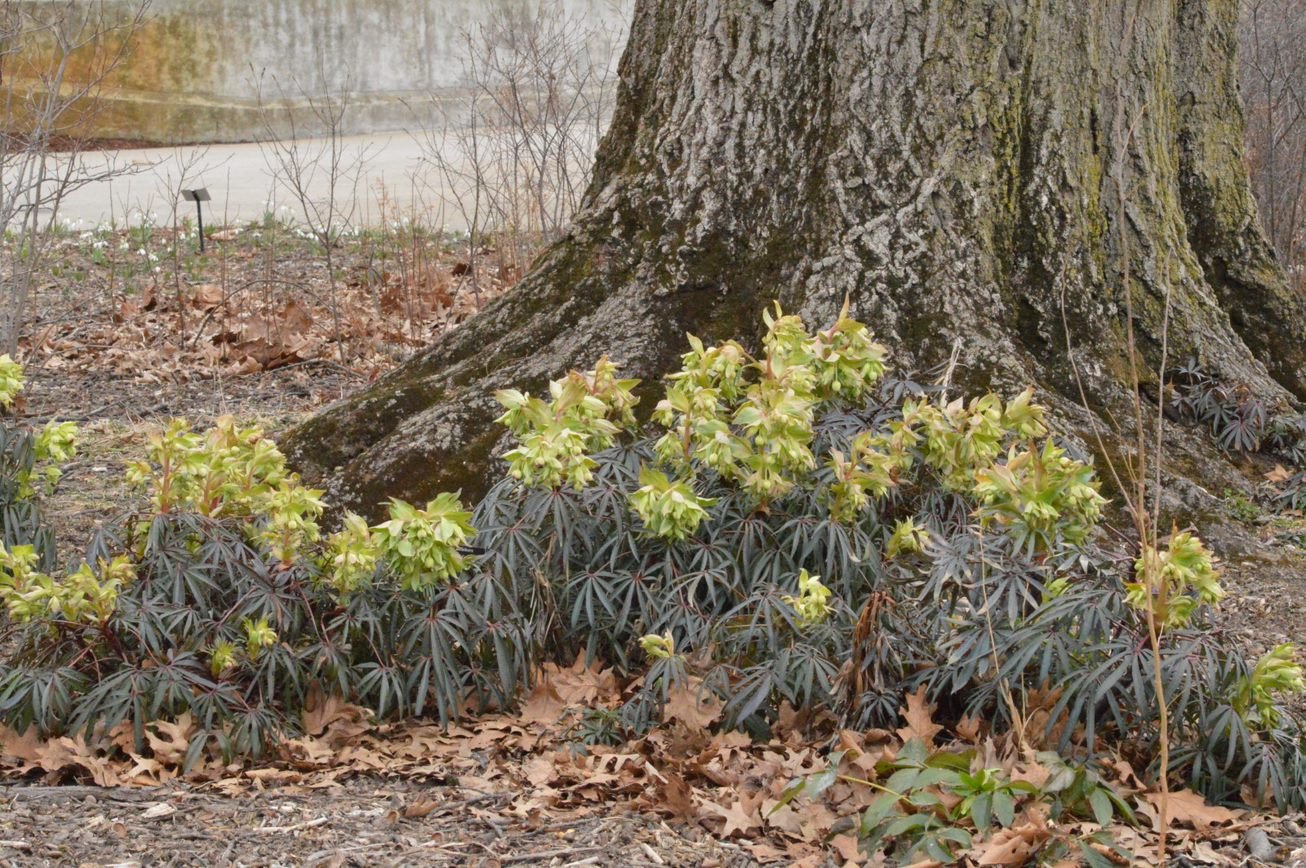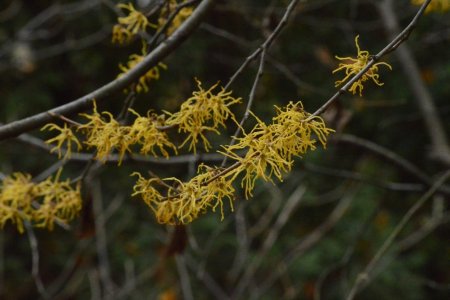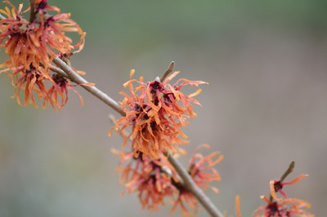Garden at Rest in Winter
In winter, The Garden at Newfields is a peaceful place. The vivid colors of summer and fall have faded, and the silhouettes of mature trees dominate the skyline. Early sunsets cast long shadows across the Lilly Allee and open spaces throughout The Garden. While The Garden rests during the long cold, Indiana winter, there is endless beauty and inspiration to behold, if you know where to find it.
I encourage you to bundle up and head outside to get some fresh air, enjoy the stillness of winter in Indiana and find inspiration to bring home to your cold-weather garden. The absence of foliage allows our eyes to pick up on the more subtle aspects of texture, pattern, and form. Here are some of my favorite ways to bring depth into your winter garden, along with some pops of color and, if you dare, some winter blooms!
It’s a good time of year to notice unique bark features of trees and shrubs. The next time you visit, take a moment to note the beautiful cinnamon peeling bark of paperbark maple, Acer griseum. I’m amazed at the resilience of this small maple and would grow it for the bark alone, but it also has a rich orange fall color. This selection is ideal for a smaller garden. Another standout for bark is lacebark pine, Pinus bungeana. This medium sized (40’), three needled pine is slow growing with green mottled bark, developing over time into white and silver patchwork that can’t be beat. This tree often has multiple trunks allowing for more bark to be presented when the lower limbs are removed.
The stems of redosier dogwood, Cornus sericea, add beautiful color in the shrub layer of the garden. This lowland native shrub has intense stem colors. From the vibrant red of C. sericea ‘Cardinal’ to the rich golden yellow of C. sericea ‘Flaviramea’. These carry color from fall to spring and add a vertical element to the garden. They are standouts with ornamental grasses and evergreens and pruned stems can be used as ornamentation in containers.
When it comes to fruiting shrubs in the Midwest winterberry holly, Ilex verticillata is amazing. The fruit is ornamental in addition to winter browsing for our wildlife. This larger shrub is native to the entire eastern half of the U.S., often found naturally in wet areas and needs full sun for best fruiting. A couple of the great varieties to choose from are I. verticillata ‘Maryland Beauty’, an 8’ shrub that has some of the biggest and brightest fruits, or I. verticillata ‘Red Sprite’, a smaller shrub up to 5 feet and more useful in the smaller garden Winterberry holly can also be found in multiple colors including yellow, gold (like I. verticillata ‘Goldfinch', pictured below), and coral.

Don’t forget the flowers. This is not the time for those delicate zinnias or peonies. Yes, we can still have some flower color and fragrance even during our grey days of winter. The most popular are the witch-hazels. Hamamelis virginiana, our native shrub, is typically blooming from October through December. It has nice twisted, yellow petals with a sweet fragrance. Newer selections offer orange and red coloration. There are hundreds of cultivars of the hybrid Hamamelis × intermedia that bloom in January, February, or March depending on the winter weather. These are a breath of fresh air after a cold winter. They tend to bloom and then hold for weeks, opening more on sunny days where their sweet fragrance can be enjoyed. We have a wider range of colors in our collection including deep purple. An herbaceous perennial addition that fits into any garden is the Lenten-rose, Helleborus. The market has been flooded with multiple flower colors ranging from yellow to black and with evergreen foliage it makes a great companion for other shade tolerant perennials. My favorite is bear’s foot hellebore, Helleborus foetidus, pictured below. It has a finely cut foliage with chartreuse flower structures that hold through January and February.

At the very least, I hope your visit to The Garden is a calming moment to recharge in nature, but if inspiration strikes, I hope you find this selection to be a helpful starting point. For those of you who prefer to look ahead and plan for spring, I will be right there with you flipping through nursery catalogs and making my plans for when the cold breaks.
Make the most of your winter visit to The Garden and listen to a mobile tour of the Oldfield Historic Gardens.
When the weather warms, I invite you to join me for a Director’s Tour of The Garden. Director’s Tours are held on the last Thursday of the month, April through October at 6 PM. Garden Guide tours also take place April through October. A final schedule will be posted in March.








